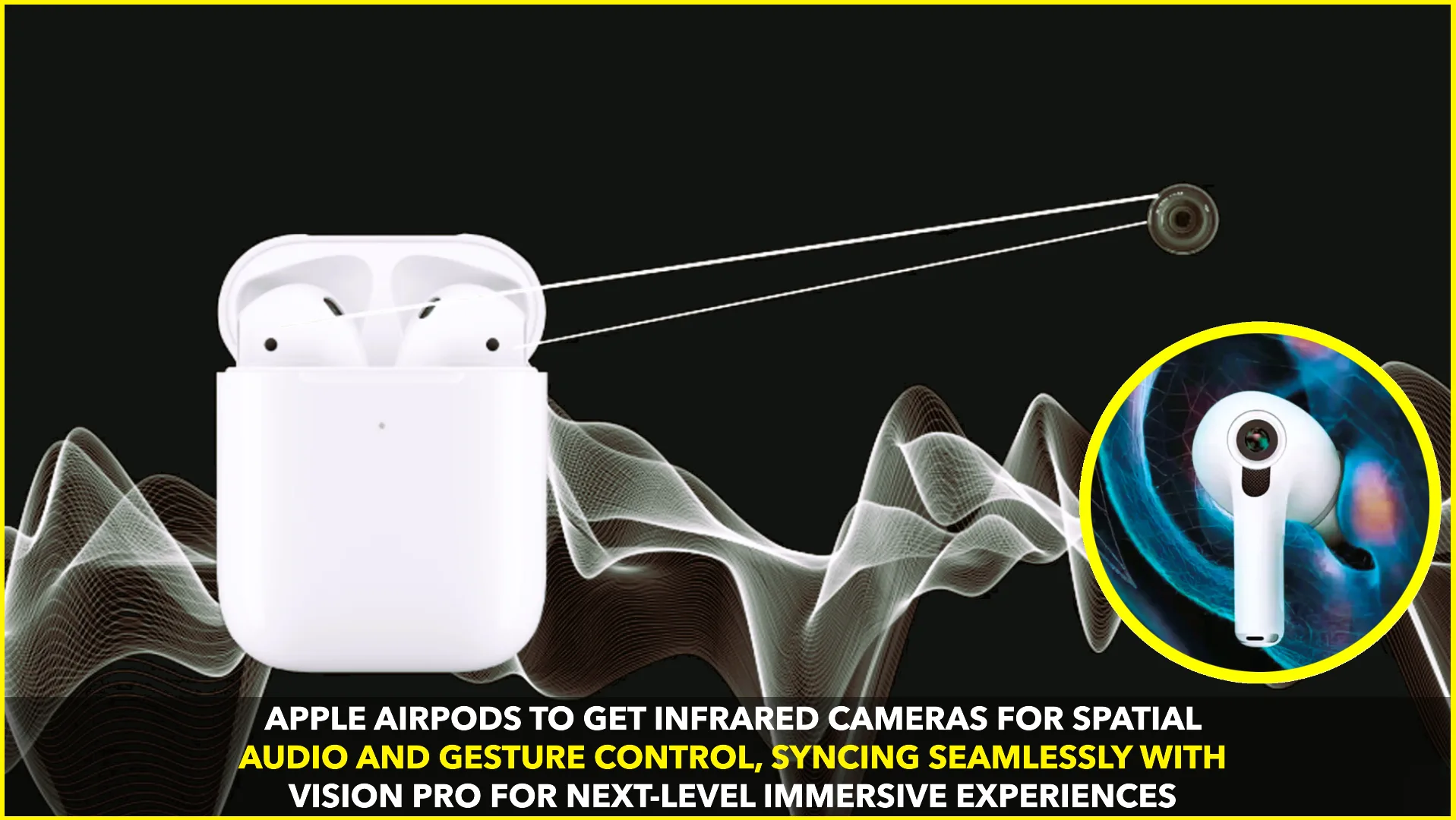Apple is reportedly working on an advanced version of its AirPods, integrating tiny infrared (IR) cameras to detect head movement and map the surrounding environment. This futuristic update is expected to enhance spatial awareness, improve gesture-based control, and deliver more immersive audio experiences—especially when used in conjunction with the Apple Vision Pro headset.
According to a June 2025 report by renowned Apple analyst Ming-Chi Kuo, these next-generation AirPods could enter mass production by 2026. The new AirPods model will reportedly feature low-power IR sensors similar to those used in Face ID on iPhones. However, instead of facial recognition, these cameras will be focused on detecting environmental data and spatial positioning.
A New Dimension of Audio and Control
The upcoming AirPods model is said to be part of Apple’s broader strategy to deepen its spatial computing ecosystem, with Vision Pro at the center. By capturing subtle head movements and gestures, the IR-equipped AirPods will allow users to interact with apps and virtual environments more intuitively—without needing to rely entirely on hand-tracking or the headset’s onboard sensors.
The sensors are expected to work in tandem with the iPhone or Vision Pro, capturing real-world depth and positional cues. This will enable pinpoint spatial audio, adjusting sound direction and intensity based on the user’s orientation. For example, turning your head while watching a movie or engaging in a FaceTime call would shift the sound source realistically—just as it would in real life.
In a post on Medium, Kuo wrote, “Apple is developing an AirPods model with infrared camera modules, and the most significant application is likely for enhancing the spatial computing experience when used with Vision Pro.” He added that each AirPod is expected to house at least one IR camera to enable real-time environmental mapping and head tracking.
Why Move Sensors to the Ears?
The decision to integrate cameras into AirPods instead of the Vision Pro headset is likely driven by weight, comfort, and battery efficiency. By shifting some of the spatial sensors to the user’s ears, Apple can make the headset lighter and more comfortable for extended use. The visual data captured by the AirPods can then be processed by a connected iPhone, reducing the load on the headset itself.
This modular approach aligns with Apple’s long-standing emphasis on seamless ecosystem integration. Users with an iPhone, Vision Pro, and the upcoming AirPods would essentially be part of a wearable computing triad—each device playing a specific role in delivering next-level experiences.
Apple’s Spatial Computing Vision
With the Vision Pro headset already heralded as Apple’s leap into spatial computing, the company’s ambitions clearly go beyond a standalone mixed-reality device. The addition of IR-equipped AirPods could transform the way users experience sound, gaming, augmented reality (AR), and virtual communication.
According to Bloomberg’s Mark Gurman, Apple has been exploring ways to improve gesture control and environmental interaction as part of its long-term mixed reality roadmap. The use of IR cameras in AirPods is a logical extension of these efforts, pushing Apple’s wearable technology beyond audio playback.
What to Expect by 2026
If the production timeline holds true, we could see the launch of these next-gen AirPods around late 2026, possibly branded as AirPods Pro (4th generation). By then, Apple is expected to release a second-generation Vision Pro and expand the ecosystem of spatial apps and experiences.
This move could redefine the role of AirPods from premium audio accessories to key components in Apple’s spatial computing ambitions.
Sources:
- Ming-Chi Kuo via Medium
- Bloomberg – Mark Gurman reports
- Apple Insider










